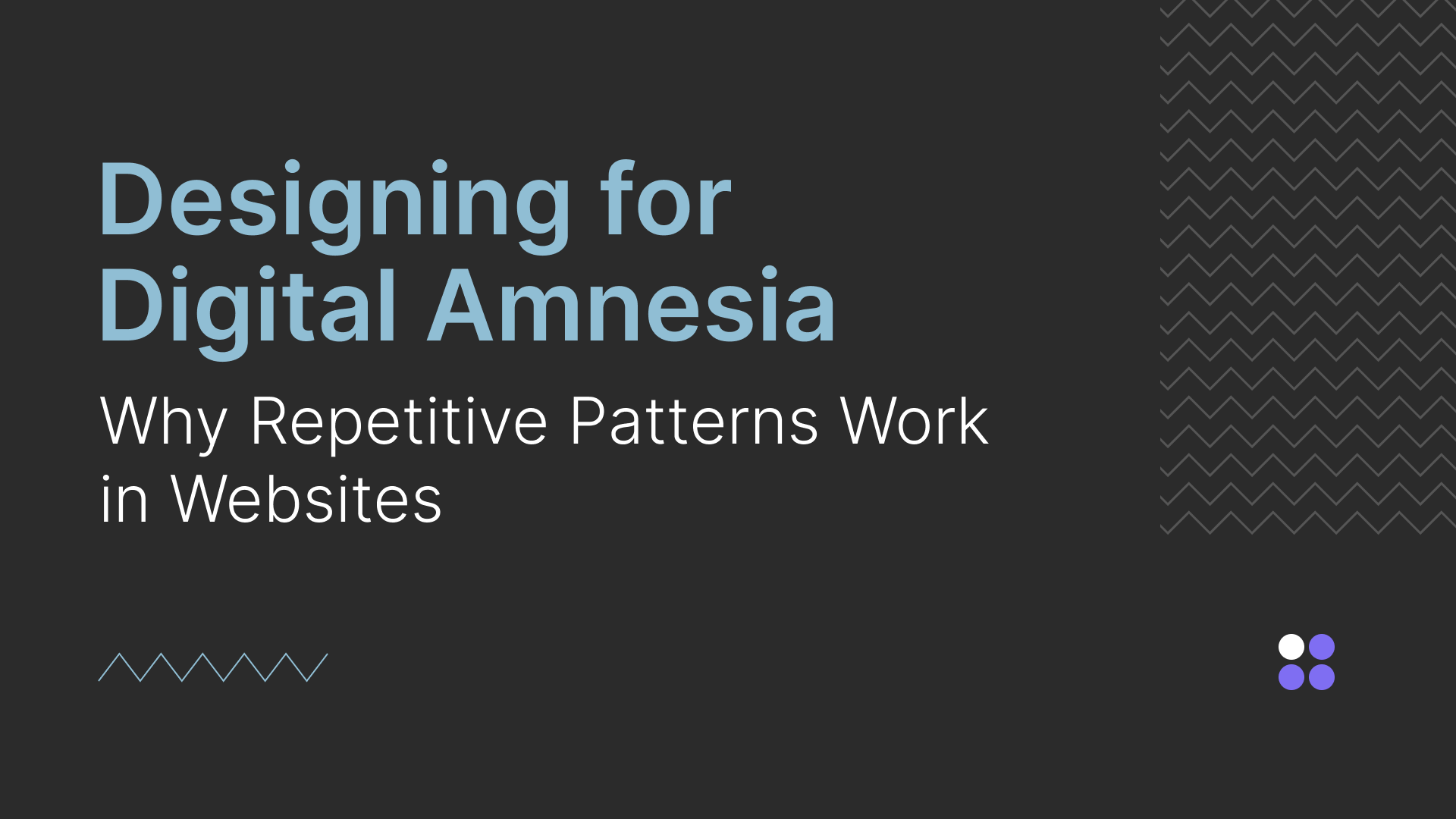
Designing for Digital Amnesia: Why Repetitive Patterns Work in Websites
Ever walked into a room and completely forgotten why you went there? That’s essentially what happens to your website visitors every single day. We are now in the age of digital amnesia – where our brains, overwhelmed by endless streams of information, have learned to forget almost everything we encounter online. The treatment? User-centred design that promotes repetition and allows users’ brains to rest.
For the Techtio web design and development team, this is both a challenge and an opportunity. The challenge? Designing websites that do not look boring and copy/pasted. The opportunity? Building websites that embrace the users’ digital amnesia instead of fighting it.
The Reality of Digital Forgetting
Think about your own browsing habits. How many websites did you visit yesterday? Can you remember three of them? Probably not. This isn’t a personal failing – it’s digital amnesia in action. Our brains, faced with information overload, have developed a coping mechanism: they simply don’t retain most digital interactions.
This phenomenon isn’t random. When users encounter familiar patterns and structures, their cognitive load decreases dramatically. They don’t need to learn how your website works because it works like every other website they’ve used successfully before.
Why Your Brain Loves Repetition
Here’s where it gets interesting. While digital amnesia makes us forget specific content, our brains are excellent at recognising patterns. When you see a hamburger menu icon, you don’t consciously think “three horizontal lines that probably open a navigation menu.” Your brain instantly recognises the pattern and knows what to expect.
This is where mental models in UX become crucial. These are the internal blueprints users carry in their heads about how things should work. When your website aligns with these existing mental models, users feel immediately comfortable and confident.
Consider how Amazon’s one-click buying button revolutionised e-commerce, not because it was innovative, but because it simplified a familiar pattern down to its essence. Users already understood purchasing – Amazon just removed the friction.
The Power of Predictable Design
Smart designers embrace repetition rather than fight it. When you use familiar patterns – navigation bars at the top, search boxes in the upper right, footer links at the bottom – you’re not being boring. You’re being brilliant.
This predictability allows users to focus on what truly matters: your content, your products, your services. They’re not wasting mental energy figuring out how to use your site because the patterns feel natural and automatic.
Here’s a secret that remains between you and the Techtio web developers: the most successful websites aren’t the ones with the most creative layouts. They’re the ones where users accomplish their goals effortlessly, often without consciously thinking about the interface at all.
Implementing User-Centred Design Principles
So how do you design for forgetful users? Start with these user-centred design principles:
Embrace Familiar Conventions
Place your logo in the top left corner. Make your main navigation horizontal across the top. Use blue text for links. These aren’t rules to rebel against – they’re cognitive shortcuts that make your users’ lives easier.
Create Consistent Patterns Throughout Your Site
If your buttons look and behave the same way on every page, users develop confidence in navigating your entire site. Consistency reduces cognitive load and builds trust.
Design For Scanning, Not Reading
Users don’t read websites – they scan them. Use clear headings, bullet points, and plenty of white space to support this natural behaviour.
Test With Real Users Regularly
Conducting UX heuristics evaluation sessions reveals where your assumptions about user behaviour might be wrong. What seems obvious to you might be confusing to someone encountering your patterns for the first time.
The Repetition Revolution
The beauty of designing for digital amnesia lies in this paradox: by making your website forgettable in terms of interface complexity, you make your content and brand unforgettable.
When users can effortlessly navigate your site, find what they need, and complete their tasks without friction, they associate those positive feelings with your brand. They might not remember the specifics of your navigation structure, but they’ll remember how easy and pleasant their experience was.
Let Techtio Implement the Best User-Centred Design Principles!
In our age of digital amnesia, the websites that win aren’t the ones that demand the most attention – they’re the ones that require the least mental effort. By embracing repetitive patterns and familiar conventions, you’re not settling for mediocrity. You’re choosing empathy over ego, user success over designer cleverness.
Remember: your users’ brains are already full. Give them the gift of recognition rather than the burden of learning something new. In a world where digital experiences are quickly forgotten, being predictably useful is the ultimate competitive advantage.
Your users will thank you – even if they can’t quite remember why. To achieve this, remember to contact us today!
Have any question?
Do not hesitate to contact us. We’re a team of experts ready to talk to you.
Your Opinion Matters!
Your feedback is important to us and we would greatly appreciate your thoughts on this article! Please let us know if you liked it so we can improve our content in future:
Get in touch!
For any questions or concerns, you may contact us using the following details
- + (357) 25 256 865
- [email protected]


